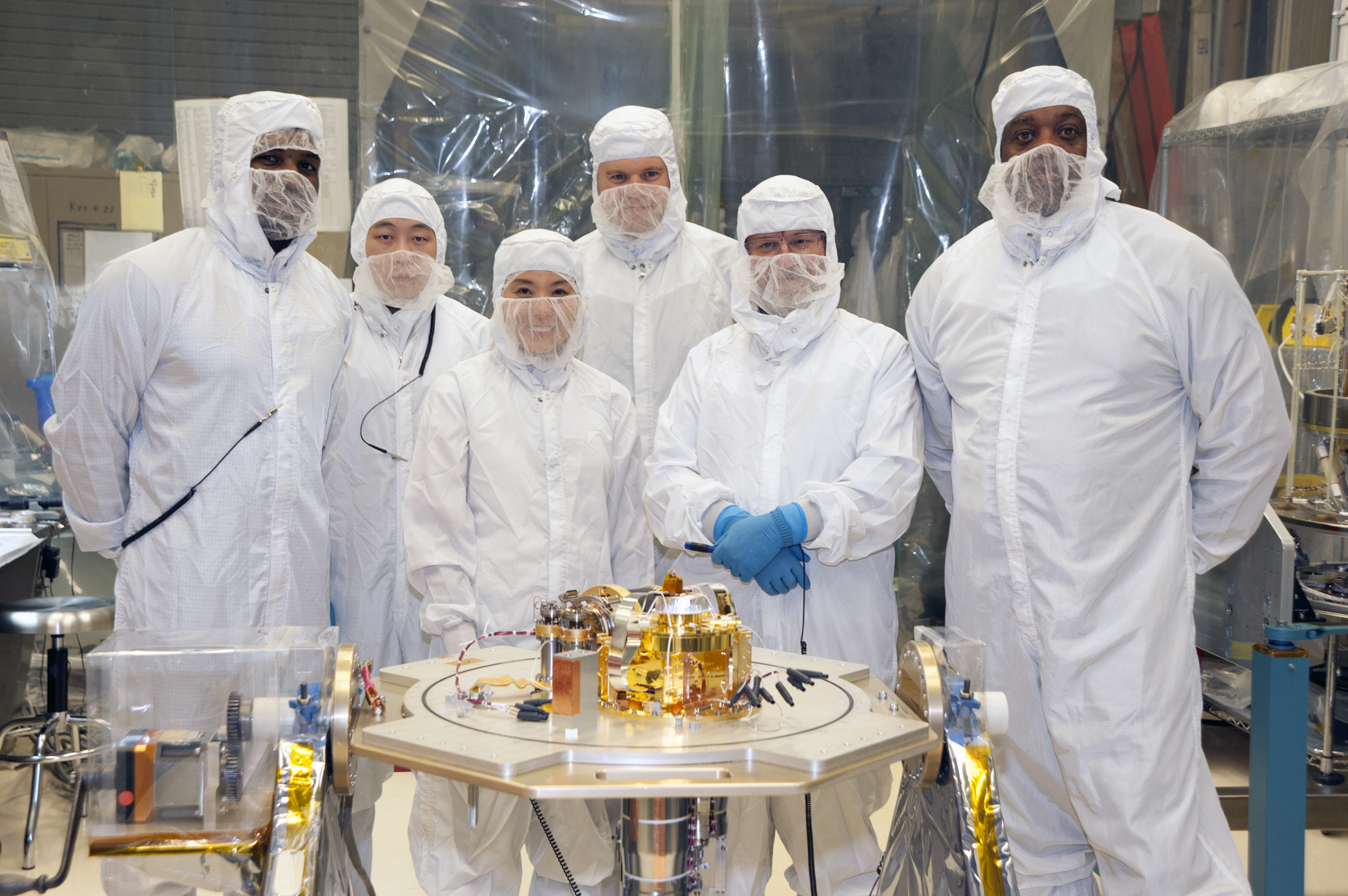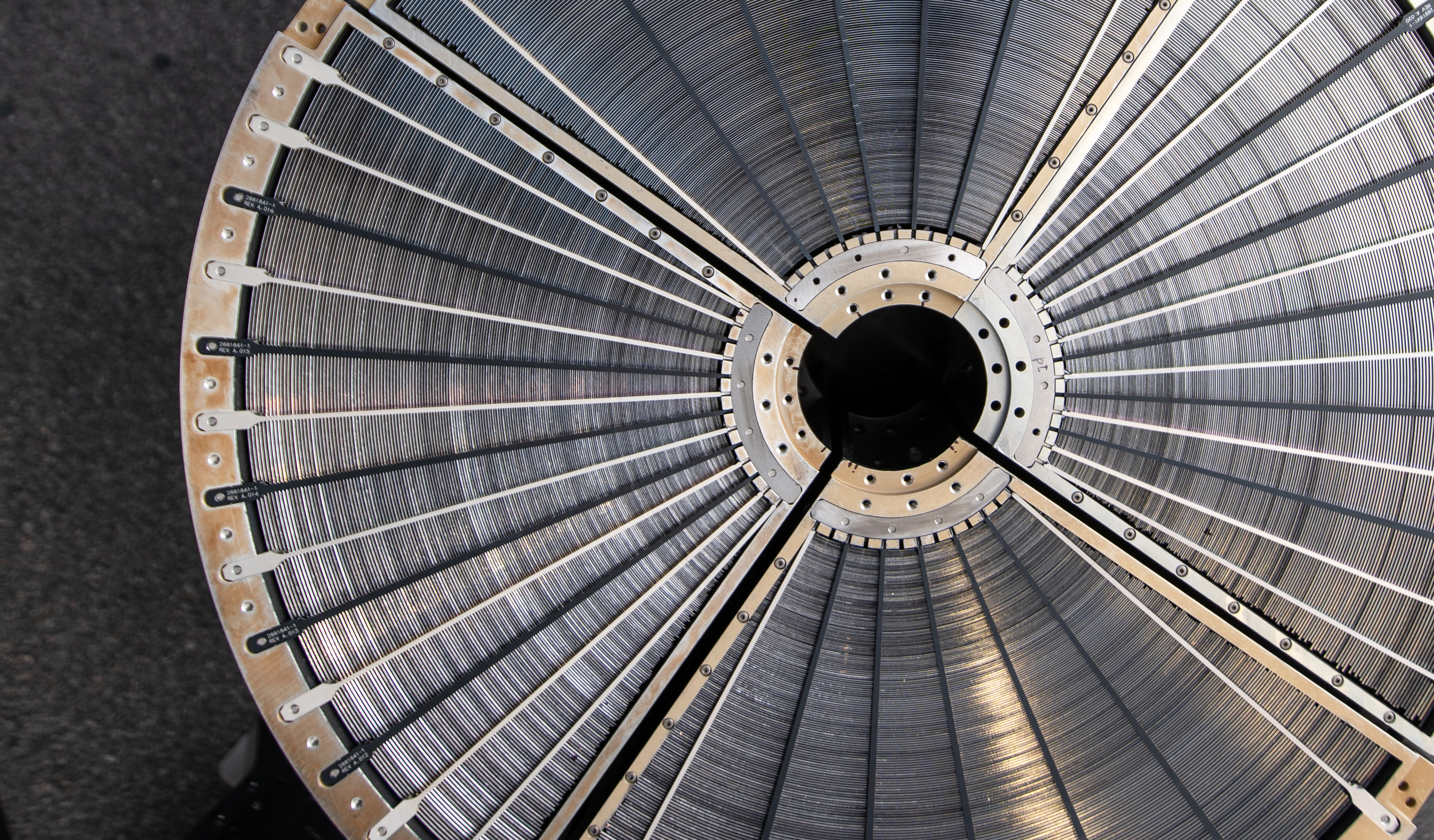Assembling XRISM's X-ray Mirrors
Team members Lawrence Lozipone of Stinger Ghaffarian Technologies, Inc. and Yang Soong, a researcher at the University of Maryland, College Park, work with flight mirrors for the X-ray Imaging and Spectroscopy Mission (XRISM). Nested aluminum mirror segments – 1,624 of them for each X-ray Mirror Assembly – focus the incoming X-rays for the satellite's science instruments.
Credit: NASA's Goddard Space Flight Center
The videos on this page show completed components of the flight mirror assemblies for the X-ray Imaging and Spectroscopy Mission (XRISM, pronounced “crism”), which is expected to launch from Japan in 2023.
An X-ray Mirror Assembly (XMA) includes both a primary and a secondary mirror. Each is built using four quadrants that contain 203 nested aluminum mirror segments, for a total of 1,624 segments in each XMA. The mirrors will deflect incoming light into the satellite’s two instruments: an X-ray calorimeter spectrometer called Resolve, and an X-ray imager called Xtend.
XRISM is a collaboration between the Japan Aerospace Exploration Agency (JAXA) and NASA, along with ESA participation, to investigate the X-ray universe using high-resolution imaging and spectroscopy.
NASA’s Goddard Space Flight Center developed the XMAs for both instruments, as well as the Resolve detector and many of its subsystems.
Shorter version of the above video.
Credit: NASA's Goddard Space Flight Center
Credits
Please give credit for this item to:
NASA's Goddard Space Flight Center. However, individual items should be credited as indicated above.
-
Producer
- Scott Wiessinger (USRA)
-
Videographers
- Harrison Bach (Intern)
- John Caldwell (Advocates in Manpower Management, Inc.)
-
Science writers
- Francis Reddy (University of Maryland College Park)
- Jeanette Kazmierczak (University of Maryland College Park)
Release date
This page was originally published on Wednesday, August 19, 2020.
This page was last updated on Wednesday, May 3, 2023 at 1:44 PM EDT.




